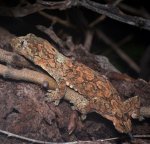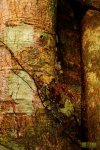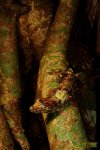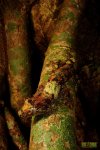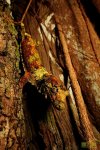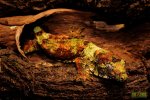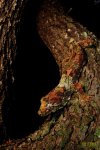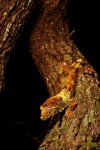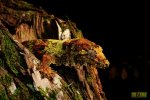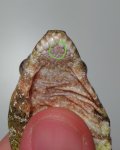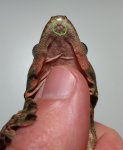- Messages
- 381
- Location
- Atlanta, GA

At the risk of completely oversimplifying this discussion, which I know I am doing: Does PI vs. GT or chahoua vs. jalu really matter when referencing our captive animals? How do you confirm or consider such locality or species information?
I've done the research and have read almost everything that's published, as well as spoken to a few people with first or second hand knowledge. Here are the cliff notes I’ve been throwing around in the back of my head:
- When chahoua were first imported and distributed into the hobby, they were just called "chahoua" and there was little to no identification of locales.
- So, many of the first animals started floating around and breeding with no real locale-specific information.
- I’ve heard anecdotally that these animals were from Grand Terre, but I have no proof.
- It wasn't until later in the 90s (1997/1996) that a group of animals came into the hobby and was said to be pure lineage from the Isle of Pines that locality came up as something people cared about. So... everything before that was anyone's best guess or word of mouth.
- Even then, there was no awareness about two different species of Mniarogekko in existence, so they could have theoretically been both M. jalu and M. chahoua, or just one or the other. We don't know how or where exactly they were collected.
- Even then, there was no awareness about two different species of Mniarogekko in existence, so they could have theoretically been both M. jalu and M. chahoua, or just one or the other. We don't know how or where exactly they were collected.
- I think there is some legitimacy in considering animals that we can confirm were collected from specific localities - I've heard anecdotal locality information for Michael Troeger's animals, which I believe were said to be from a concentrated part of northern Grand Terre (maybe it was south? I don't recall 100%).
- There have been many high white/white collar animals collected from Grand Terre, as the pics below indicate, debunking the myth that animals with little color, little color and minimal white are from GT while the ones with high pattern, high color and white pattern are from the Isle of Pines.
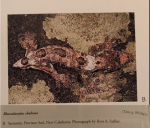

- Patterns, weights, snouts and eye shapes are variable among what is represented in the hobby as PI or GT - as well as images from the expeditions to New Caledonia.
- Most of the locality-confirmed animals we have seen in writings and materials are from GT, with very few confirmed from the Isle of Pines.
- Many of those confirmed to be from GT also exhibit white collar and high white pattern and seem to have smaller eyes and broader snouts… traits many hobbyists associate with PI animals.
- We know of M. jalu and M. chahoua, and populations of both have been suggested to exist throughout New Caledonia (mainland Grand Terre and the surrounding islands).
- The differences between M. jalu and M. chahoua are hard to distinguish with the naked eye and genetic testing is the best indicator - but how much of that has been done? Not much, from what I know.
- Even if there were populations of M. jalu and M. chahoua that came into the hobby through the 80s, 90s and early 00s, at this point, they would be cross bred and any real ability to distinguish between them would probably be lost. I'm not even sure what genetic testing would reveal.
- Based on the testing done by Bauer, Sadler, Whitaker and and Jackman (Revision of the Giant Geckos of New Caledonia - 2012) there was 7.8% genetic difference between M. chahoua specimens found on the central part of Grand Terre and îlse Belep vs. specimens found on the southern half of the island, in locales such as Sarraméa and Vallée d’Amoa.
- But, IMPORTANT POINT: “Specimens from these latter two localities are likewise highly genetically divergent from one another, but existing sample sizes are small and morphological differences between them have not been identified” (pg 32, Revision of the Giant Geckos of New Caledonia - 2012)
- So… if I am reading that correctly, it could mean there is another “type” of Mniarogekko outside of just M. chahoua and M. jalu, but there hasn’t been enough research yet to confirm that.
- ANOTHER IMPORTANT POINT: “Many captive M. chahoua supposedly derive from île des Pins stock and these are stated by herpetoculturists to differ from Grand Terre M. chahoua; however, we have not encountered Mniarogekko on the île des Pins and have not examined museum specimens from this locality, therefore, we are unable to evaluate their taxonomic status.” (pg 32, Revision of the Giant Geckos of New Caledonia - 2012)
So, with all of this considered, I feel it’s fair to say that to accurately discuss lineage and locales now, we would have needed solid records of exactly where animals were originally collected, and to know there were at least two different species. We essentially have neither.
- For example: M. jalu collected at Riviere Nehoue, so we would have a "Riviere Nehoue" locale of jalu
- Potentially M. chahoua could have been collected at Riviere Nehoue as well, meaning we would have two different species with the same locale.
- Another example: M. chahoua collected on île des Pins or M. jalu collected on îles Belep. Overall, we would have many represented localities across two species.
In the hobby, Leachianus have gotten a better run with original locations being recorded for several individuals, but I don’t know why the same practices weren’t originally kept for chahoua, or should I say, mniarogekkos.
So, I reflect upon my own collection after reading all of this and think about the animals I have, and where they came from. All of them have been acquired based on someone else’s classification and labeling, but that is not uncommon across most species in our hobby. However, where I think the case of chahoua is unique is that even if I was to say, “Oh, these animals came from the Isle of Pines and I trust the person I bought them from,” I can’t be sure their lineage is 100% M.chahoua and doesn’t include some M.jalu. After 30+ years in this hobby, and only finding out that a second species exists in 2012 - one that is very similar looking to the naked eye - it’s likely that even what we deem to be the most pure, locale-specific animals are somewhat mixed.
With all of this, I think a bit about leopard geckos which were just “leopard geckos” for many years until some of the newer, locale-specific animals were available this decade like afghans and angras, and many others. The catch there is those animals are, or were, being actively exported and made available in the hobby with trusted lineage information. New Caledonia no longer allows exports, so I do not see us being able to turn a new page and differentiate between locales and species with legitimate, trusted data to back them up. Even then, such animals would have to be separated from all of the existing hobby mniarogekkos to preserve pure lines for the reasons noted above.
Last edited:


